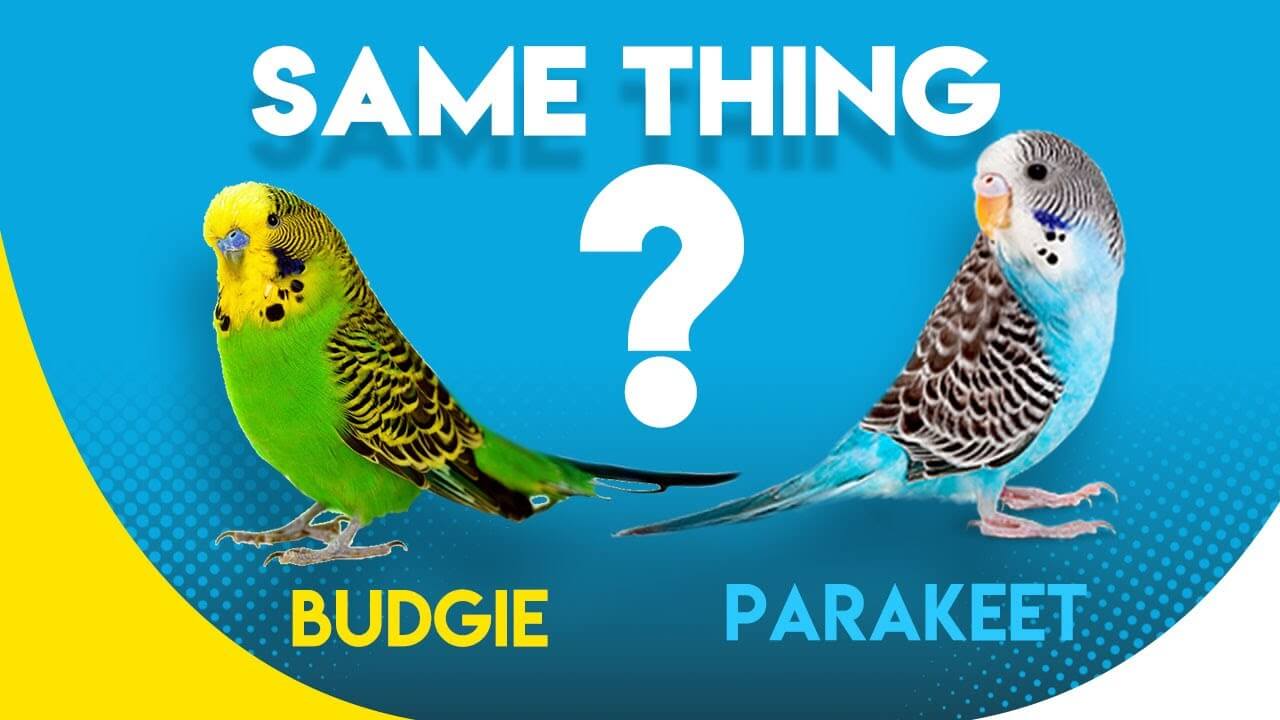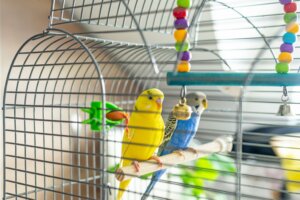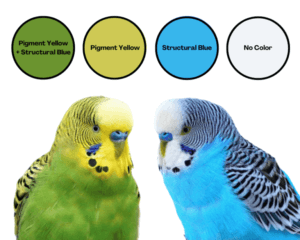What Is The Difference Between A Budgie And A Parakeet?
A budgie is a type of parakeet, specifically the Budgerigar. Parakeet is a general term for small parrots.
Budgies, short for Budgerigars, are one of the most popular pet birds worldwide. Known for their vibrant colors and playful nature, they make excellent pets. Parakeets, on the other hand, encompass a broader category of small to medium-sized parrots. This includes budgies but also other species like the Indian Ringneck and the Monk Parakeet.
People often use the terms interchangeably, but not all parakeets are budgies. Understanding this distinction helps in choosing the right bird for your home. Both types are intelligent, social, and can mimic human speech, making them delightful companions.

Credit: www.youtube.com
Budgie Characteristics
Budgies, also known as budgerigars, are small, colorful birds. They are a type of parakeet but have unique traits. Let’s explore their physical and behavioral characteristics.
Physical Traits
Budgies are small in size, usually around 7 inches long. They have a variety of color patterns. Common colors include green, blue, yellow, and white. Their feathers are vibrant and smooth.
They have a distinctive wavy pattern on their back and wings. Their beaks are small and curved. Budgies have slender bodies and long tail feathers.
| Physical Trait | Description |
|---|---|
| Size | Approximately 7 inches |
| Color | Green, blue, yellow, white |
| Pattern | Wavy on back and wings |
| Beak | Small and curved |
| Tail | Long and slender |
Behavioral Traits
Budgies are social and friendly birds. They enjoy interacting with humans and other birds. They are very playful and need stimulation.
They can learn to mimic sounds and words. Budgies are known for their chirping and singing. They are active during the day and rest at night.
- Social and friendly
- Playful and curious
- Can mimic sounds and words
- Active during the day
- Chirp and sing often
:strip_icc()/facts-about-budgies-390923_final-79ac99ea468642bd9459497b91d0cbdd.png)
Credit: www.thesprucepets.com
Parakeet Characteristics
Parakeets are small, colorful birds with charming personalities. They are often confused with budgies, but there are distinct differences. Understanding their characteristics helps in identifying and caring for them.
Physical Traits
Parakeets have a variety of physical traits that set them apart.
- Size: Parakeets are generally larger than budgies.
- Colors: They come in many colors like green, blue, yellow, and white.
- Tail: Parakeets have long, pointed tails.
- Beak: Their beaks are curved and strong.
| Trait | Parakeet | Budgie |
|---|---|---|
| Size | 7-18 inches | 6-7 inches |
| Colors | Multiple | Green, Blue |
| Tail | Long and pointed | Short and blunt |
Behavioral Traits
Parakeets are known for their lively behavior and social nature.
- Social: They enjoy being with other birds and people.
- Vocal: Parakeets are very talkative and mimic sounds.
- Active: They love to play and explore their surroundings.
- Intelligent: Parakeets can learn tricks and commands.
Understanding these characteristics will help you provide better care for your parakeet.
Habitat Differences
Understanding the habitat differences between a budgie and a parakeet helps in providing better care. Both birds have unique natural and captive environments.
Natural Environments
Budgies come from Australia. They live in open woodlands, grasslands, and scrublands. These areas provide plenty of seeds and water sources.
Parakeets hail from various regions. They inhabit tropical and subtropical areas. Their habitats include forests, savannas, and bushlands.
Captive Environments
In captivity, both birds need clean and spacious cages. Budgies thrive in cages with horizontal bars for climbing. They enjoy chewing on toys and perches.
Parakeets require similar setups. They also need varied perches and toys. This keeps them mentally and physically stimulated.
| Bird | Natural Habitat | Captive Needs |
|---|---|---|
| Budgie | Australia: Woodlands, Grasslands, Scrublands | Spacious cage, horizontal bars, toys, perches |
| Parakeet | Tropical/Subtropical: Forests, Savannas, Bushlands | Spacious cage, varied perches, toys |
Both budgies and parakeets need plenty of fresh water. Daily cage cleaning is essential. Fresh food like seeds, fruits, and vegetables is important.
Dietary Needs
Understanding the dietary needs of budgies and parakeets ensures their health. Both birds have unique nutritional requirements. This section explores their diets in detail.
Budgie Diet
Budgies require a balanced diet. Their diet consists of seeds, fruits, and vegetables. Seeds should form the base of their diet.
- Millet
- Canary seed
- Oats
Budgies also enjoy fresh fruits. These fruits include apples, pears, and berries. Offer vegetables like carrots, spinach, and broccoli.
| Food Type | Examples |
|---|---|
| Fruits | Apples, Pears, Berries |
| Vegetables | Carrots, Spinach, Broccoli |
| Seeds | Millet, Canary Seed, Oats |
Budgies need occasional protein. Provide boiled eggs or beans. Clean water is essential daily.
Parakeet Diet
Parakeets have a diet similar to budgies. Seeds, fruits, and vegetables are key components. They also enjoy a seed mix.
- Millet
- Sunflower seeds
- Hemp seeds
Fresh fruits should be part of their diet. Parakeets like apples, melons, and grapes. Offer vegetables like peas, bell peppers, and kale.
| Food Type | Examples |
|---|---|
| Fruits | Apples, Melons, Grapes |
| Vegetables | Peas, Bell Peppers, Kale |
| Seeds | Millet, Sunflower Seeds, Hemp Seeds |
Parakeets need protein too. Include boiled eggs or cooked chicken. Provide fresh water daily.
Health Concerns
Understanding the health concerns of your pet birds is crucial. Budgies and parakeets, while similar, have different health issues. This guide will help you keep your feathered friends healthy and happy.
Common Budgie Issues
Budgies are prone to several health problems. Knowing these issues helps in early detection and treatment.
- Respiratory Issues: Budgies often suffer from breathing problems.
- Feather Plucking: Stress or illness can cause feather plucking.
- Obesity: Poor diet may lead to obesity in budgies.
| Health Issue | Symptoms | Prevention |
|---|---|---|
| Respiratory Issues | Wheezing, labored breathing | Clean cage, fresh air |
| Feather Plucking | Bald spots, irritated skin | Reduce stress, vet check-up |
| Obesity | Excess weight, inactivity | Balanced diet, exercise |
Common Parakeet Issues
Parakeets also face some unique health challenges. Keeping an eye on these can ensure their well-being.
- Psittacosis: A bacterial infection that affects parakeets.
- Scaly Face Mites: Mites cause crusty areas on the face.
- Egg Binding: Female parakeets may have trouble laying eggs.
| Health Issue | Symptoms | Prevention |
|---|---|---|
| Psittacosis | Nasal discharge, lethargy | Quarantine new birds, vet care |
| Scaly Face Mites | Crusty beak, eyes | Regular vet check-ups, treatment |
| Egg Binding | Straining, swollen abdomen | Proper diet, vet assistance |
Training And Socialization
Training and socializing your pet bird can be a fun and rewarding experience. Both budgies and parakeets require attention, patience, and consistency. Understanding the differences in their training needs can help you build a strong bond with your feathered friend.
Budgie Training
Budgies are small, intelligent birds. They respond well to positive reinforcement. Use treats and praise to encourage good behavior.
- Start with basic commands like “step up” and “step down”.
- Keep training sessions short, around 10-15 minutes.
- Practice consistently, ideally every day.
Budgies love interaction and can learn to mimic sounds and words. Repeat words clearly and consistently. Use simple phrases and be patient.
Parakeet Training
Parakeets, including budgies, are social birds. Training them can be similar, but may vary with their size and personality.
| Training Aspect | Budgie | Other Parakeets |
|---|---|---|
| Command Training | Short, consistent sessions | May require longer sessions |
| Interaction | Daily socialization | Varies, but generally high |
| Vocalization | Can mimic sounds | Some species mimic well |
Other parakeet species might need more time to get comfortable. Larger parakeets could require more physical space for training. Always use positive reinforcement and keep sessions enjoyable for your bird.
Both budgies and parakeets thrive on social interaction. Spend time talking and playing with them daily. This will keep them happy and well-adjusted.
Choosing The Right Bird
Choosing the right bird can be challenging. Many people confuse budgies and parakeets. Understanding their differences helps in making a better decision.
Lifestyle Considerations
Your lifestyle affects your bird choice. Budgies and parakeets have different needs.
- Space: Budgies require smaller cages. They are suitable for apartments.
- Noise: Parakeets are louder than budgies. Consider your noise tolerance.
- Time: Both birds need daily interaction. Budgies can be less demanding.
Long-term Commitment
Both budgies and parakeets need long-term care. Their lifespans vary.
| Aspect | Budgie | Parakeet |
|---|---|---|
| Lifespan | 5-10 years | 15-20 years |
| Health | Generally healthy | Prone to specific diseases |
Owning a bird is a long-term responsibility. Choose wisely based on your commitment level.
:strip_icc()/parakeet-97839520-5b4d67f9c9e77c003725a47b.jpg)
Credit: www.thesprucepets.com
Frequently Asked Questions
What Is A Budgie?
A budgie, short for budgerigar, is a small, colorful parrot. They are native to Australia and popular as pets.
Are Budgies And Parakeets The Same?
Budgies are a type of parakeet. However, “parakeet” is a broad term that includes many small parrot species.
How Do Budgies And Parakeets Differ?
“Budgie” specifically refers to the Budgerigar species. “Parakeet” is a general term for small parrots, including budgies.
What Are The Size Differences?
Budgies are usually 7-8 inches long. Other parakeets can vary greatly in size, from small to medium.
Conclusion
Understanding the differences between a budgie and a parakeet helps in making informed pet choices. Both birds are delightful and have unique traits. Knowing their specific needs ensures better care and a happy pet. So, whether you choose a budgie or a parakeet, you’re in for a rewarding experience.
Hello Dear, I'm Poli Kolymnia, owner of many birds (including budgies).
With a deep passion for these feathered companions, I'm here to share my expertise and extensive knowledge on birds care.
My articles cover essential topics like diet, housing, care, and health, providing practical tips to help you create a happy and thriving environment for your birds.







